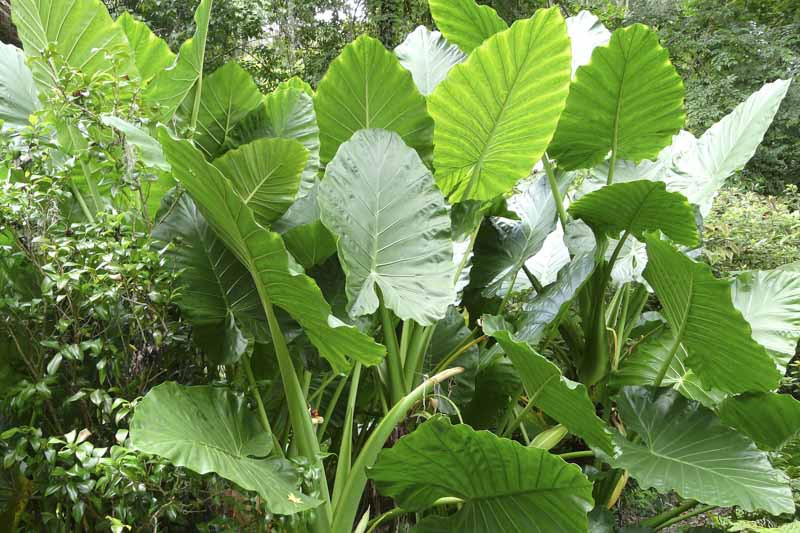Alocasia (Elephant Ear)
Alocasia, known as Elephant Ear due to its large, dramatic foliage, is a genus of broad-leaved perennials native to tropical and subtropical Asia and Eastern Australia. Its dramatic display of unique, typically glossy leaves lends a striking tropical feel to gardens or interior spaces.
- Habit: The habit of Alocasia is erect, with leaves that can reach impressive sizes, often accompanied by a tall and slender flowering spike. Depending on the species and variety, leaf size can range from a foot to several feet in length. Their leaf color ranges from deep green to purple, often with bold veining or intriguing color contrasts.
- Hardiness: Alocasia is typically suitable for USDA Zones 9-11, preferring the warmer end of the spectrum. It is not frost-tolerant and should be brought indoors or protected in colder climates. However, it can also be grown as an indoor plant, where its spectacular foliage can truly shine.
- Flowers: Alocasia produces a unique, hooded flower, similar to other members of the Araceae family, like the calla lily. However, their flowers are often overlooked in favor of their standout leaves.
- Uses: Alocasia works well as a focal point in a mixed border, a container specimen, or a houseplant. Some varieties are also used in traditional medicines or as ornamental vegetables in their native lands.
- Benefits: Benefits of Alocasia include their ability to purify the air, a common trait among houseplants. They are also resistant to most pests, though they can be prone to spider mites and aphids.
One must be careful around Alocasia, however, as all parts of the plant are poisonous if ingested and can cause skin irritation. It’s advisable to keep them out of the reach of children and pets. Despite this, their dramatic aesthetic and tropical feel make them a beloved choice among plant enthusiasts.

